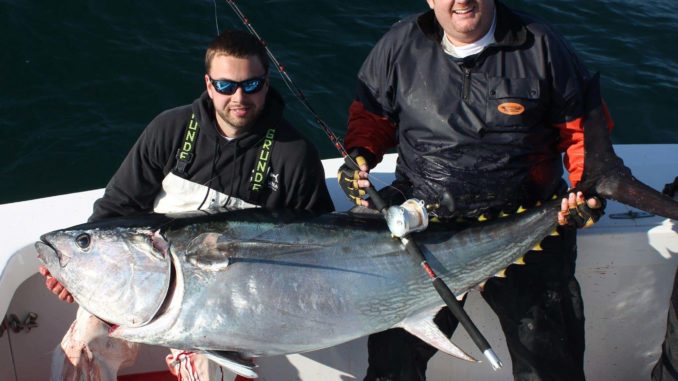
Jigging, plugging or trolling, bluefins are there for the taking.
Bluefin tuna is the species that has driven the largest paradigm shift in the recent history of North Carolina’s saltwater big-game fishing. When it was discovered that they spend a good portion of their winters in the waters off the Tarheel State, efforts to target them immediately extended the fishing season into the cold-weather months.
First found by fisherman targeting striped bass off of the beaches on the Outer Banks, the giant tunas — vying for the same menhaden as the rockfish — would occasionally grab a plug launched on spinning or casting gear in the direction of a striper, then immediately destroy the angler’s tackle. It didn’t take long before boats were targeting them with gear more suited to handling their size and power.
In the early days of the fishery, the mid- to late-1990s, virtually all bluefins were targeted by chunking; they were drawn to the stern of large sportfishing boats by chunks of butterfish and herring turned into a chum slick. When the tuna showed, a hook was baited and allowed to float down through the slick. It usually wasn’t long until a reel started screaming and the angler was hooked up.
Joe Seegers, who mated on the Citation — then a charter boat operating out of Hatteras — said that during that time, the action was typically fast and furious and often lasted the entire fishing day. On one trip, with two anglers fishing with stand-up gear, he wired 41 fish.
The chunking fishery lasted for a few years, but when the commercial quota on bluefins wasn’t filled during the summer and fall by fishermen in the northeast, the North Carolina season evolved into more of a trolling fishery. While heavily policed by National Marine Fisheries Service, boats that were permitted to catch and sell these fish commercially often split time killing tuna for the market and releasing them on charters.
Whether it was the kill factor, weather changes or the tunas’ migration habits is unknown, but this change in technique coincided with a change in venue. The main body of the fish began to move down the beach, and Morehead City became the epicenter for this fishery. That lasted for several years, and then it seemed that the had almost dispersed. Morehead City still accounted for a few fish, but boats from ports are far south as Carolina Beach, Southport, and Ocean Isle Beach caught some as well. It was as if the tuna had learned to avoid the concentrated commercial effort.
Fast-forward a few more years, and heavy concentrations of bluefin tuna once again showed up off the Outer Banks, but this time, they were in much deeper water. Capt. Jay Kavanagh of the Bite Me, a 51-foot sportfisher out of Hattears Harbor Marina, tailors his winter schedule to pursue these fish in depths of greater than 50 fathoms. He said one of the biggest assets to charter fishing out of Hatteras is that the fleet works together to locate these fish. Bluefin tuna can be found anywhere there is bait, and their location will change from one day to the next. Being warm-blooded fish, bluefins can withstand any water temperature that their food sources can, and when fish are found, it’s common courtesy in Hatteras to let the fleet know your location.
Kavanagh said that there have been days when he was the first to see the tell-tale signs of the tuna, be it the steam coming off of the water, a hard blue-green color change or actually marking them on the depth sounder. However, there have been days where he was miles away from the fish, and having that open line of communication with other boats sets everyone up for success.
Often fishing with Capt. Jeremy Hicks, a former mate who has gotten his own captain’s license, Kavanagh has discovered methods other than trolling or chunking that have paid dividends for his charters and the fishery. He prefers jigging and popping to more conventional methods for a number of reasons. First, his anglers can use lighter tackle, which leads to less angler fatigue. Second, these methods can often be more effective than trolling or chunking. Finally, and perhaps carrying the most weight, jigging and popping for these behemoths is infinitely more fun.
When fish are deep, as is most often the case, Kavanagh’s job is to locate the school and to position the boat so the anglers can jig most effectively. On Bite Me, a Furuno depth sounder displays individual tuna as large boomerangs. It is marking the tunas’ swim bladders, and it tells Kavanagh the exact depth the tuna are holding. He will make several turns over the fish and bait to determine which direction they are headed and set up the boat so it will drift over the school, then lets the mate know the depth the fishermen need to drop their jigs to put them in front of the tuna.
Both Kavanagh and Hicks said that in this specialized fishery, most anglers bring their own tackle. Short, stout jigging rods are the norm, as is braided line that changes color ever 10 meters. Holding this line are fast-retrieve spinning reels that can handle enormous amounts of drag. Kavanagh said top-drawer jiggers tend to build their own rods, matching them with higher-end spinning reels from Shimano, Diawa and Jigging Master that are often modified, or “blue-printed” to allow even more drag than originally built for.
Jigs range in size from 350 to 650 grams (12 to 22 ounces) and are rigged with a solid ring, split ring and an assist hook. The hook descends from the top of the jig, which looks awkward at first but has proven much more effective than a hook at the base. Top jiggers use a wind-on fluorocarbon leader or connect 130- to 180-pound fluorocarbon to the braid with a PR or “monster” knot. inally, the solid ring on the jig is crimped to the leader, rather than tied.
Whether the tackle is owned by the charter or supplied the morning of the trip, it must be double and triple-checked to ensure that it is bulletproof. These fish will expose any weakness in tackle without question.
After Kavanagh has set up the drift and Hicks has checked the tackle, the anglers will drop down past the depth recorded from the bridge, using the color change on the line to determine how far the jig has fallen. They need to be spaced around the cockpit to minimize tangles and crossed lines, then the jigs need to be retrieved through the school. Kavanagh said the that the action is more important than the jig or its color; varying the retrieve of the jig can maximize the angler’s chances of getting bit. Anglers can vary their retrieve by either jerking the rod tip or by changing the speed at which they reel. In either case, there are no subtle bites.
When a tuna strikes a jig, the angler on the other end of the rod will know it without question. The shortest, stoutest jig rod will instantly be turned into a “U” shape and the reel will start screaming. The angler must immediately put all the pressure he can on the fish to bring it to the surface. At that point, it’s easy to see which anglers are in shape, and which ones aren’t.
When tuna are visible on the surface, Kavanagh takes another approach, pulling out popping rods and sight-casting to the pod of fish. Popping rods are much longer than jigging rods to allow for long casts that are often required to accurately place the popper in front of the fish, actually “leading” it. When the lure lands, the angler is instructed to begin his retrieve immediately, once again moving the rod tip to give the popper action and entice a bite. The bite is usually seen before the rod doubles over, and some of the bites are about as subtle as a dump truck. Bluefins will often clear the water multiple times when chasing a popper, given the proper action. Kavanagh said he gets a better hookup ratio by replacing the treble hooks that come with the popper with single hooks, and it makes it easier and safer for the mate to remove the hook from the mouth of a fish that is to be released — there is little worse than being connected to the tuna by a hook through the hand.
One great aspect of chasing bluefin tuna in the winter and early spring off the Outer Banks is that conditions are always changing. There is no telling what other species may be mixed in with bluefins. Hicks said he’s had days where they’ve located bluefins by trolling, then stopped and dropped jigs to them. Multiple times, they have trolled through a school of yellowfin tuna, which bit every bait in the spread. Other times, the jigs are attacked by amberjacks as soon as they hit the water.
DESTINATION INFORMATION
WHEN TO GO — Bluefin tuna typically show up off the Outer Banks in mid-winter. Depending on the presence of bait and the water temperature, this fishery can remain hot and heavy into the early spring. February, March, and early-April can be the peak months, provided conditions are right. Hatteras is the perfect jumping-off point for bluefins, which can show up anywhere that is 50 fathoms or deeper and is holding bait.
HOW TO GET THERE — US 64 or US 264 are the prime routes to get fishermen from points west to the Nags Head, then NC 12 south to Hatteras. Be aware of the status of the Herbert C. Bonner Bridge across Oregon Inlet, which was closed for safety concerns in early December. From points south, ferries can carry fishermen from Cedar Island to Ocracoke and Hatteras. For ferry schedules and reservations, call 800-293-3779.
GUIDES/FISHING INFO — Capt. Jay Kavanagh, Bite Me Sportfishing, 252-996-0295, www.fishbiteme.com; Capt. Dan Rooks, Tuna Duck Sportfishing, Capt. Dan Rooks 252-216-6160, www.tunaduck.com; Frisco Rod & Gun, Frisco, 252-995-5366, www.friscorodandgun.com. See also Guides and Charters in Classifieds.
ACCOMMODATIONS — Hatteras Marlin Motel, Hatteras, 866-986-2141, www.hatterasmarlin.com; Outer Banks Chamber of Commerce, 252-441-8144, www.outerbankschamber.com.
MAPS — John McWhite, ProFinder Charts and Chips, 910-512-6700.

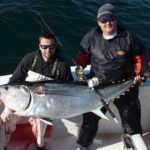
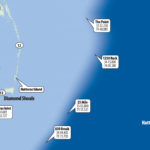
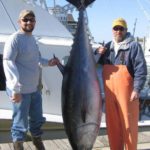
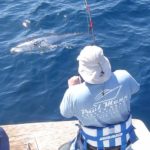


Be the first to comment